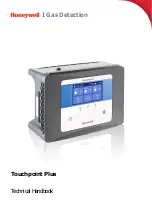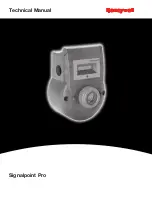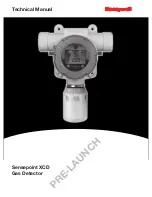
Installation
36
With rollers it is virtually impossible to provide a constant resistance path mainly because the
bearings are usually lubricated by grease that is non conductive. The bearings act as contacts
and in consequence the contact resistance varies as they move through the grease.
The alternative approach of permanently open circuiting the loop must be taken. This can be
done by electrically insulating one end of the roller shaft from the frame of the conveyor. In
practice it does not matter whether the eddy current path is open or short circuited, provided it
can guarantee to be constant throughout the life of the conveyor, since problems arise only
when the resistance of the path varies.
Be careful also when installing a conveyor, since large eddy current loops can be formed by
service conduits used for routing electrical and compressed air supplies. Only bring down one
electrical conduit since it has to be bonded to the conveyor frame for safety electrical earthing
purposes.
Ensure that the compressed air supply pipe, if metallic, is insulated where it touches the
detector or the conveyor frame at any point, or the electrical conduit in the region of the
conveyor. It is always better to bring the final air connection on a flexible nylon tube. To prove
the point one may like to try a simple experiment. Take a piece of wire and form it into a loop
a little smaller than the detectors aperture. Do not at this stage connect the two ends together.
It will be found that the open circuit loop can be brought quite close to the aperture without
causing the detector to trigger. If the ends of the loop are intermittently closed then open
circuited, it will be seen that the detector will trigger ate the instant of open or close circuiting,
even if is at some distance away from the head aperture.
Mounting Horizontal Heads for Use with Conductive Products
Loma heads up to 350mm in height are supplied with an adjustable height mounting kit. The purpose
of the height adjustment is to enable the centre line of the conductive product to pass through the
“centre line” of the head aperture.
Conductive Products and Mounting Heads Vertically
When mounting a metal detector head vertically, head the smallest dimension becomes the aperture
width. The same rules apply as for centring a conductive product for a horizontal head. However the
centre of the aperture now is in the vertical plane. For this set up, the product is centred using guides
mounted on the conveyor, these channel the product centre through the aperture centre.
Fixed metal
Since the detector is efficiently screened, large masses of metal near the top, bottom or sides
will not normally affect its performance. However metal that is nearer to the aperture than 1.5
times the smaller of the two aperture dimensions as measured from the centre of the case
depth, can frequently be a major cause of poor performance, requiring the detector sensitivity
to be reduced.
Moving Metal
Moving metal must be situated no nearer than 3 times the smaller aperture dimension from
the detector as measured from the centre of the case depth
Содержание IQ3+ST
Страница 2: ......
Страница 36: ...Safety First 26 THIS PAGE IS INTENTIONALLY LEFT BLANK ...
Страница 43: ...Installation 33 ...
Страница 60: ...Installation 50 THIS PAGE IS INTENTIONALLY LEFT BLANK ...
Страница 70: ...About the Metal Detector Range 60 THIS PAGE IS INTENTIONALLY LEFT BLANK ...
Страница 172: ......
Страница 212: ...Operating Instructions 202 THIS IS PAGE INTENTIONALLY LEFT BLANK ...
Страница 240: ...Maintenance 230 THIS PAGE IS INTENTIONALLY LEFT BLANK ...
Страница 244: ...Glossary 234 THIS PAGE IS INTENTIONALLY LEFT BLANK ...
















































